Despite moving to New York City in 1995, it wasn’t until I bought my first coop in Brooklyn Heights 12 years ago, that I first set foot in the borough of BK. In those first five years in NYC, I worked my way through three nabes—the Upper West Side, Chelsea and Tribeca—before a friend suggested Brooklyn Heights.
“But that’s in… um, Brooklyn,” I responded. Oh, how times have changed.
In the fall of 1999, after first setting foot in the Heights to begin my search, I recall vividly sniffing the air—and capturing the wondrous waft of autumn leaves. Nature was all about. The main drag Montague Street was charming. The area was clean, proud and felt so very safe. And then I found the Promenade. Sold!
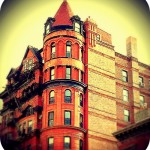 After seeing dozens of overpriced or undersized units, I at last found my utopia: a two-bedroom, 950-square-foot dump in a beautifully historic building near the end of Montague Street, just steps from the Promenade. Ultimately, I paid $255,000 for the apartment, which at one time was the super’s home (I was told he not only had a large extended family, but frequent guests from afar, who ultimately left the unit in disastrous condition). After a typically gruesome coop interview, I moved in May 2, 2000.
After seeing dozens of overpriced or undersized units, I at last found my utopia: a two-bedroom, 950-square-foot dump in a beautifully historic building near the end of Montague Street, just steps from the Promenade. Ultimately, I paid $255,000 for the apartment, which at one time was the super’s home (I was told he not only had a large extended family, but frequent guests from afar, who ultimately left the unit in disastrous condition). After a typically gruesome coop interview, I moved in May 2, 2000.
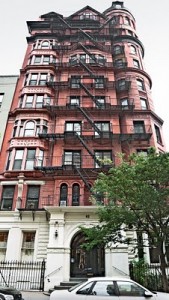 While the second-floor apartment is hardly light-filled, I can’t imagine living anywhere else today. It doesn’t hurt that a grocery store and liquor shop—essential—are mere blocks away. So it might be shady indoors, but it takes all of 60 seconds to discover paradise on the outside.
While the second-floor apartment is hardly light-filled, I can’t imagine living anywhere else today. It doesn’t hurt that a grocery store and liquor shop—essential—are mere blocks away. So it might be shady indoors, but it takes all of 60 seconds to discover paradise on the outside.
Over the years, my building has installed a rooftop deck, replaced the elevator, added storage in the basement, while my neighbors (with expected exceptions here and there) are a gregarious lot. Meanwhile, I’ve renovated my kitchen and second bedroom,  gutted the bathroom, and had the good fortune of having my master bedroom redone on an episode of HGTV’s “Dear Genevieve.”
gutted the bathroom, and had the good fortune of having my master bedroom redone on an episode of HGTV’s “Dear Genevieve.”
And during the past decade-plus, I’ve come to discover and treasure a wide swath of big ole Brooklyn. Working for the U.S. Census Bureau in 2010, I walked through Downtown Brooklyn every day for seven months—which I admittedly once viewed as seedy and a bit discomforting. Over time, I came to fondly regard that area as a cool, reminiscent mirror image of Manhattan in the late 1970s (not so much anymore). Alongside my Census duties, I discovered—block by block—Fort Greene, Prospect Park, DUMBO, Vinegar Hill, Cobble Hill, Carroll Gardens, Red Hook and Sunset Park.
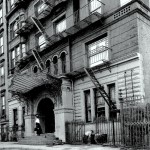 And now some history of the building I call home: 62 Montague Street. The Harbor View Apartments, later named The Arlington, were completed in 1887. The building was designed by Montrose W. Morris, who had built his own residence in Brooklyn and opened it to the public as his office, as a means of advertising his acumen.
And now some history of the building I call home: 62 Montague Street. The Harbor View Apartments, later named The Arlington, were completed in 1887. The building was designed by Montrose W. Morris, who had built his own residence in Brooklyn and opened it to the public as his office, as a means of advertising his acumen.
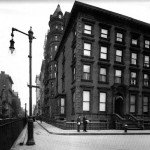 Among visitors was developer Louis F. Seitz, who, mightily impressed, commissioned an apartment house on property he owned along Brooklyn’s Nostrand Avenue. He was so pleased with the resulting Alhambra that he commissioned Morris to design two additional multiple-family residences—a growing trend amid the prominent brownstones in the Heights.
Among visitors was developer Louis F. Seitz, who, mightily impressed, commissioned an apartment house on property he owned along Brooklyn’s Nostrand Avenue. He was so pleased with the resulting Alhambra that he commissioned Morris to design two additional multiple-family residences—a growing trend amid the prominent brownstones in the Heights.
In 1885, architectural firm Parfitt Brothers built the Montague, Grosvenor and Berkeley apartment buildings on Montague Street. Two years later, Morris was commissioned to design The Arlington, just up from a ferry landing at the foot of Montague Street. At the time, a trolley ran to the end of Montague, where the ferry took old-moneyed passengers to Wall Street.
 Harlem-born American playwright Arthur Miller (1915-2005) lived on the 10th floor of 62 Montague in the early 1940s with his first wife Mary Grace Slattery, paying $60 a month, while writing and working at the Brooklyn Navy Yard. It’s said to be one of four addresses he held in the Heights. In 1946, his play “All My Sons” earned him a first Tony Award. In 1949, Miller’s career-defining “Death of A Salesman” won a Pulitzer Prize and another Tony, propelling him to fame. He met Marilyn Monroe in 1951, then left poor Mary to become Monroe’s third husband in July 1956. She wasn’t having Brooklyn, and the couple moved to Manhattan. They divorced in 1961 and Monroe died 19 months later. Perhaps she’d still be with us had the pair stayed in BK?
Harlem-born American playwright Arthur Miller (1915-2005) lived on the 10th floor of 62 Montague in the early 1940s with his first wife Mary Grace Slattery, paying $60 a month, while writing and working at the Brooklyn Navy Yard. It’s said to be one of four addresses he held in the Heights. In 1946, his play “All My Sons” earned him a first Tony Award. In 1949, Miller’s career-defining “Death of A Salesman” won a Pulitzer Prize and another Tony, propelling him to fame. He met Marilyn Monroe in 1951, then left poor Mary to become Monroe’s third husband in July 1956. She wasn’t having Brooklyn, and the couple moved to Manhattan. They divorced in 1961 and Monroe died 19 months later. Perhaps she’d still be with us had the pair stayed in BK?
The Arlington, meanwhile, originally contained 20 family apartments and 10 “bachelor”—or studio—units. For its first 20 years, at 10 stories, the building was the tallest residence in the Heights.
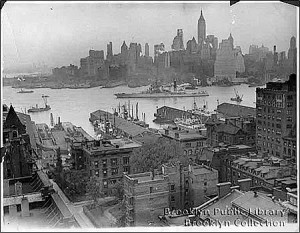 In 1965, 62 Montague joined with the Brooklyn Heights neighborhood as a National Historic Landmark for its “rare charm and historic significance.” The petition read: “Of the 1,284 buildings fronting on streets within the proposed District, 684 were built before the Civil War and 1,078 before the turn of the century. There are 60 Federal, 405 Greek Revival, 47 Gothic Revival and 201 Anglo-ltalianate buildings, as well as 216 buildings in eclectic and miscellaneous styles, not to mention 61 early carriage-houses grouped largely along unspoiled mews. In addition, 190 buildings are of generally conforming scale.”
In 1965, 62 Montague joined with the Brooklyn Heights neighborhood as a National Historic Landmark for its “rare charm and historic significance.” The petition read: “Of the 1,284 buildings fronting on streets within the proposed District, 684 were built before the Civil War and 1,078 before the turn of the century. There are 60 Federal, 405 Greek Revival, 47 Gothic Revival and 201 Anglo-ltalianate buildings, as well as 216 buildings in eclectic and miscellaneous styles, not to mention 61 early carriage-houses grouped largely along unspoiled mews. In addition, 190 buildings are of generally conforming scale.”
To maintain the auspices of its Landmark stature, 62 Montague Street has been undergoing a massive renovation to restore and repair its façade to original grandeur: which boasts astonishing details, including terra cotta cherubs, intricate roping in the concrete and other decorative elements from sidewalk 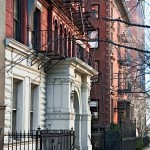 level to tip-top.
level to tip-top.
Whenever friends come to visit in New York, they are consistently charmed, if not seduced, by the architectural grandeur and calm of the Heights. I always nod in agreement, noting that when I worked in Manhattan as a journalist at Billboard magazine and then came home to Brooklyn, I felt I had a “there” and a “here,” two distinctly phenomenal destinations only a subway ride apart. How fortunate I am to have the two: New York City and the greatest neighborhood in the world, Brooklyn Heights. There’s nowhere I’d rather be.


